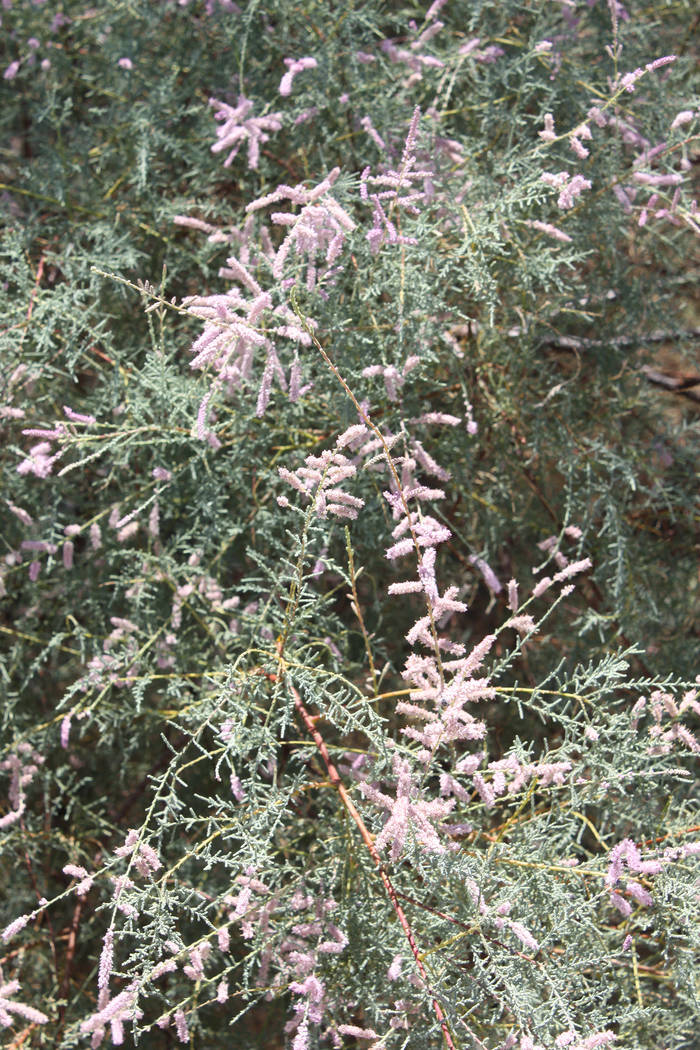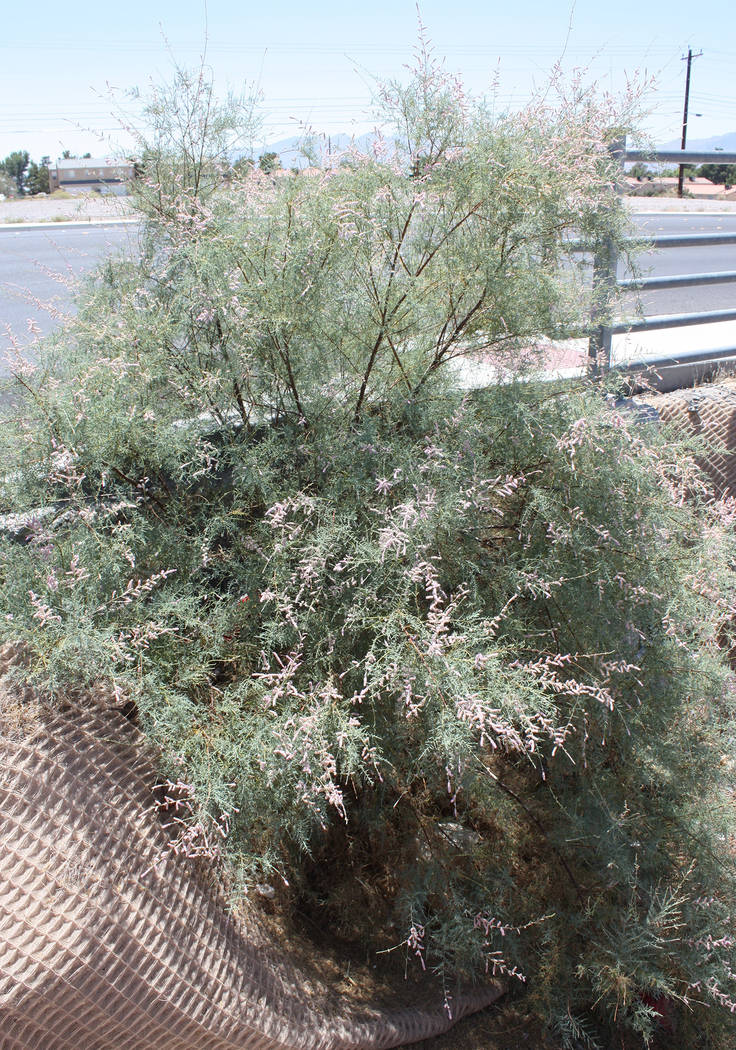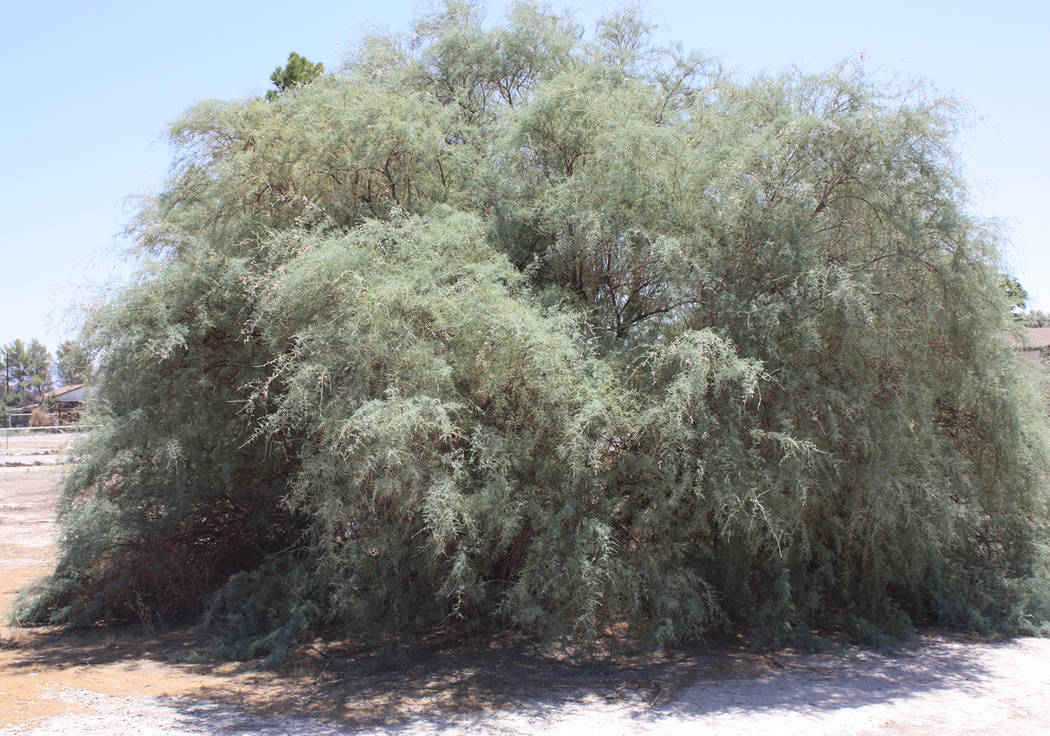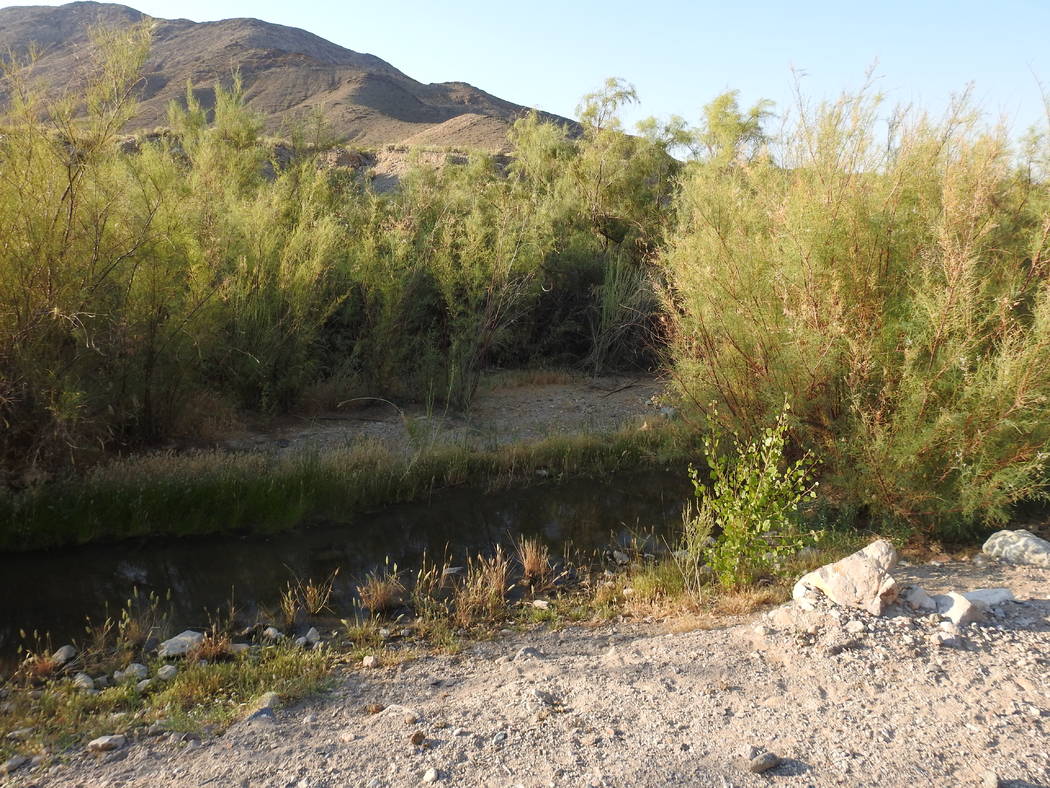Pahrump workshop to teach residents to tackle salt cedars
Salt cedars: invasive, prolific, environmentally damaging and known for consuming massive quantities of water, these plants are considered noxious by the state of Nevada.
Though not a native of the United States, its introduction to the country in the 1800s has led to widespread distribution of the species, creating concerns over the negative impacts reported to be connected with salt cedars.
In Pahrump, where water troubles have contributed to turbulent disquiet in the community, the presence of the hardy salt cedar is a sore spot for many. Eradication is not so simple, however, as countless residents who have attempted to thwart the plant will have undoubtedly found.
That is where experts come in, offering property owners and the environmentally-conscious the benefit of their knowledge and the education necessary to tackle the resilient salt cedar. Local residents will soon have the opportunity to learn from the professionals of the Nevada Department of Agriculture and University of Nevada, Reno Cooperative Extension, which will host a Salt cedar Control Workshop in Pahrump on Tuesday, Aug. 14. The event is set for 6:15 p.m. in the Pahrump Cooperative Extension, 1651 E. Calvada Blvd., in the 4-H building.
Speakers will include Nevada Department of Agriculture’s Noxious Weeds Coordinator Sean Gephart and UNR Cooperative Extension Agent M.L. Robinson. Together, the two will give participants an overview of the salt cedar species and its impacts, explain the laws regulating it and perhaps most importantly, teach attendees how to effectively remove the tenacious plant from their land.
As defined on the Nevada Department of Agriculture’s website, salt cedars are shrubs or small trees with alternate, deciduous, green to blue-green leaves that are oval to lance-like in shape. The plants can reach up to 20 feet in height and produce tiny flowers with large amounts of pollen, making them of allergenic concern to those with seasonal allergies. They prefer riparian areas and have been documented in all 17 Nevada counties.
The USDA National Agriculture Library states that salt cedar, a member of the tamarix genus and sometimes known as tamarisk, has the effect of lowering water tables. Though estimates vary, most sources and reports agree that tamarisk has the potential to consume hundreds of gallons of water per day and also has a relatively high evapotranspiration rate. But that is not the only environmental threat posed.
The very nature of the tamarisk’s structure and function holds a danger as well. With foliage that sequesters salt and then drops to the ground, tamarisk creates leaf litter that results in large deposits of salt in the soil, the National Agriculture Library detailed. With soil salinity levels raised, it can be much more difficult for indigenous species to flourish, lowering biodiversity in areas with thick stands of salt cedar. The salt cedars themselves, however, thrive in saline and alkaline soils. Additionally, with a deep taproot and creeping roots, salt cedars are resistant to drought.
Controlling salt cedars can be extremely difficult if the correct approach is not taken. Valley residents wishing to learn more about the invasive species are encouraged to attend the upcoming workshop, where they can arm themselves with the knowledge to conquer the plant for not just their own benefit but that of the entire community as well.
Contact reporter Robin Hebrock at rhebrock@pvtimes.com
At a glance
The Saltcedar Control Workshop is scheduled for 6:15 p.m. on Tuesday, August 14 at the Pahrump Cooperative Extension, 1651 E. Calvada Blvd. in the 4-H Building. For more information call Helene Camption at 702-610-8065.

















